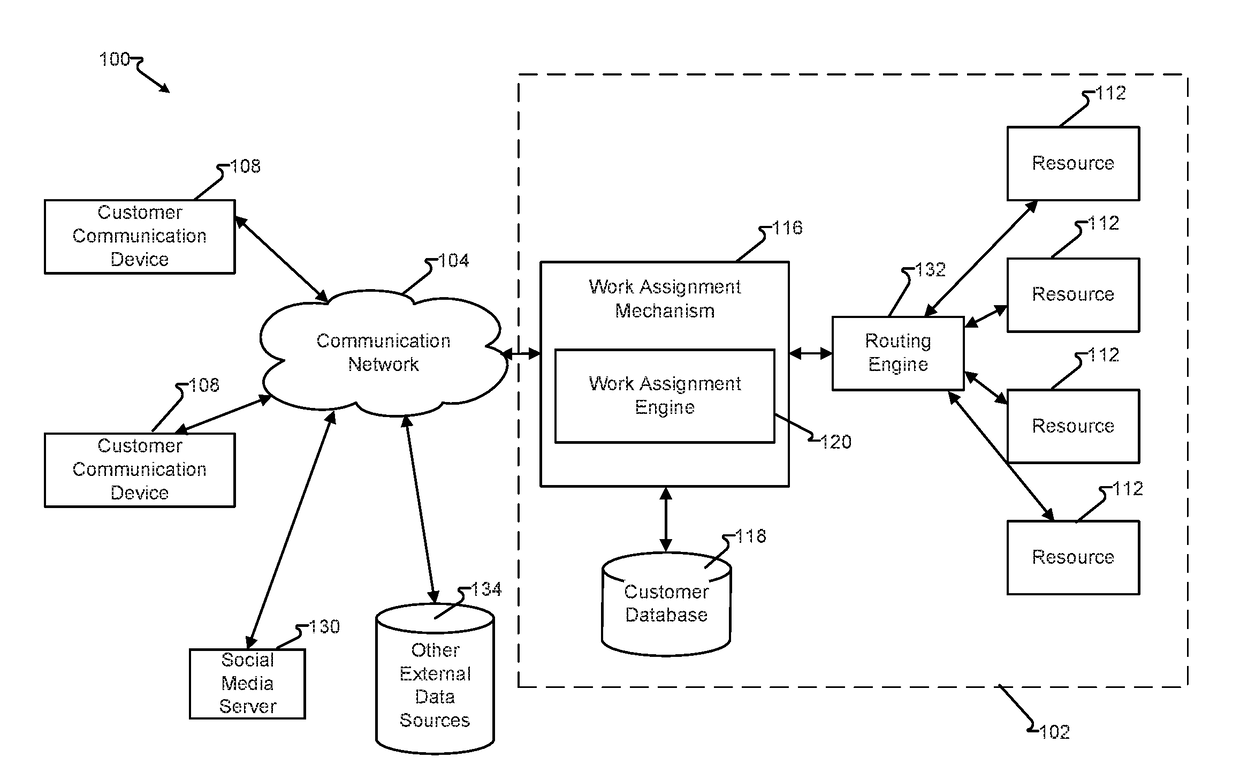System initiated dialog adjustment
a technology of system and dialog, applied in the field of system and method of communication system, can solve the problems of being or becoming off-topic, unable to effectively handle new interaction types on additional channel types, and prior art decision trees cannot handle messages from customers,
- Summary
- Abstract
- Description
- Claims
- Application Information
AI Technical Summary
Benefits of technology
Problems solved by technology
Method used
Image
Examples
Embodiment Construction
[0074]The ensuing description provides embodiments only and is not intended to limit the scope, applicability, or configuration of the claims. Rather, the ensuing description will provide those skilled in the art with an enabling description for implementing the embodiments. It will be understood that various changes may be made in the function and arrangement of elements without departing from the spirit and scope of the appended claims.
[0075]Any reference in the description comprising an element number, without a subelement identifier when a subelement identifier exists in the figures, when used in the plural, is intended to reference any two or more elements with a like element number. When such a reference is made in the singular form, it is intended to reference one of the elements with the like element number without limitation to a specific one of the elements. Any explicit usage herein to the contrary or providing further qualification or identification shall take precedence...
PUM
 Login to View More
Login to View More Abstract
Description
Claims
Application Information
 Login to View More
Login to View More - R&D
- Intellectual Property
- Life Sciences
- Materials
- Tech Scout
- Unparalleled Data Quality
- Higher Quality Content
- 60% Fewer Hallucinations
Browse by: Latest US Patents, China's latest patents, Technical Efficacy Thesaurus, Application Domain, Technology Topic, Popular Technical Reports.
© 2025 PatSnap. All rights reserved.Legal|Privacy policy|Modern Slavery Act Transparency Statement|Sitemap|About US| Contact US: help@patsnap.com



